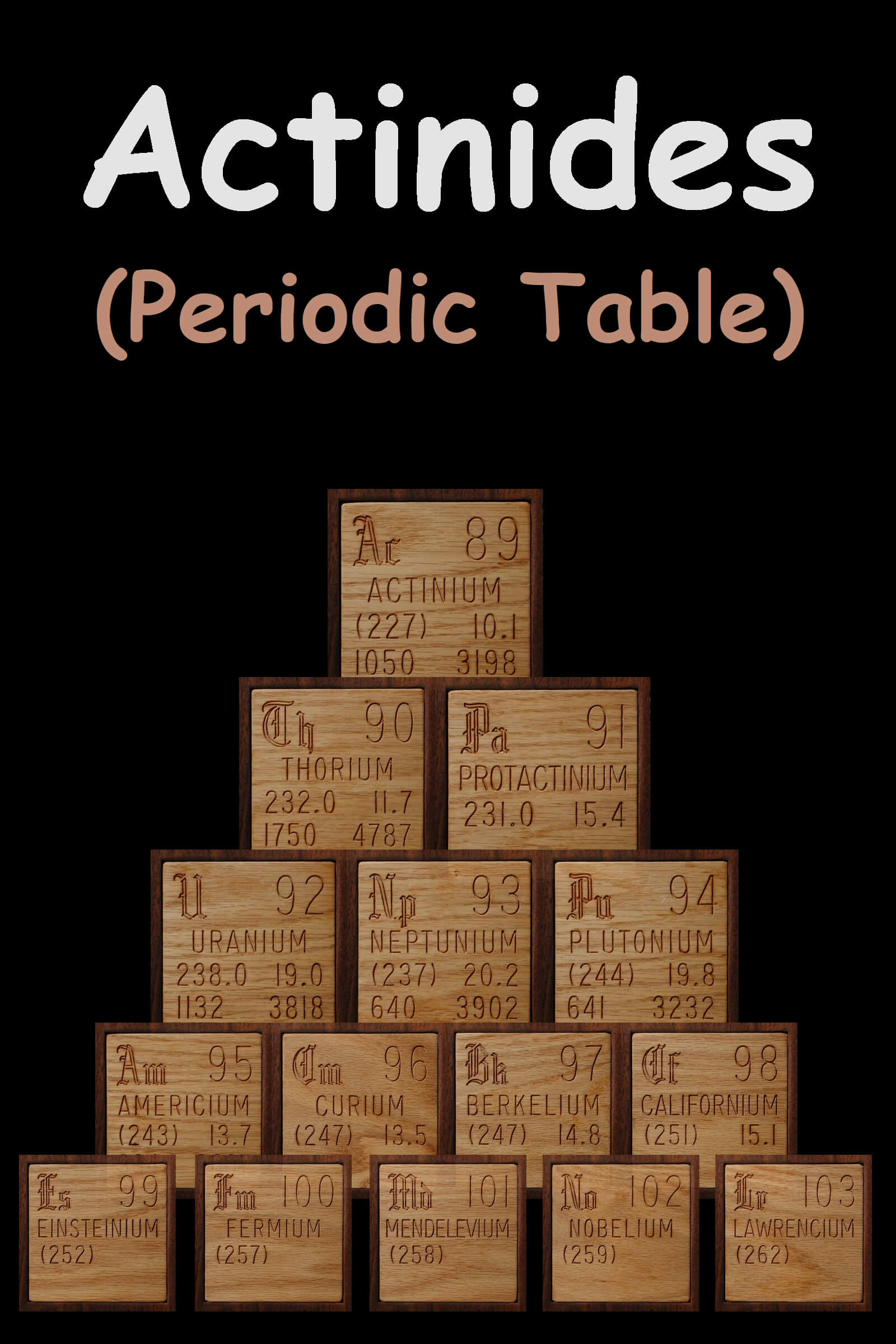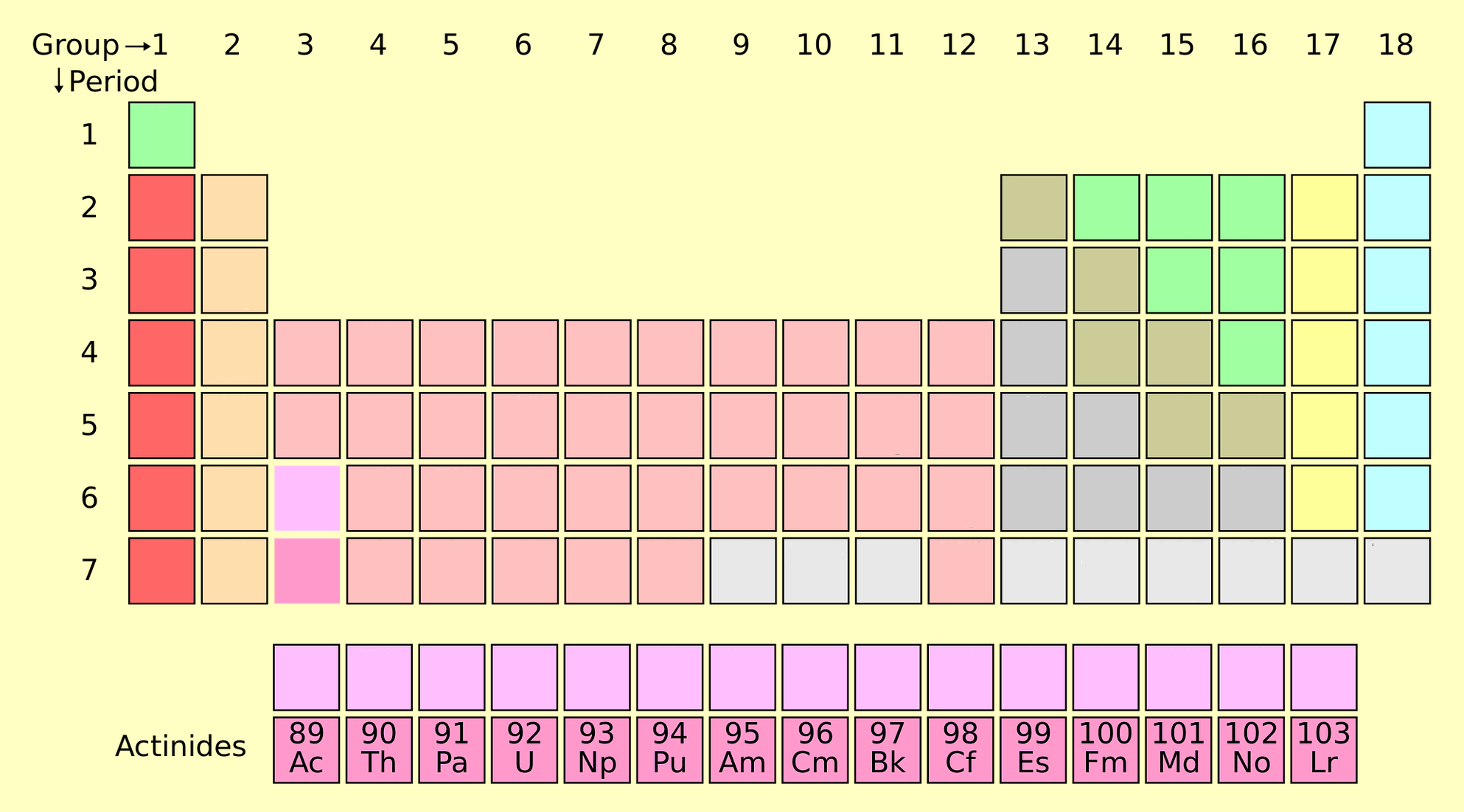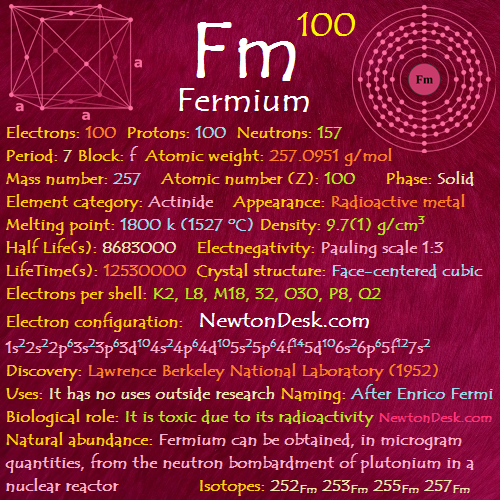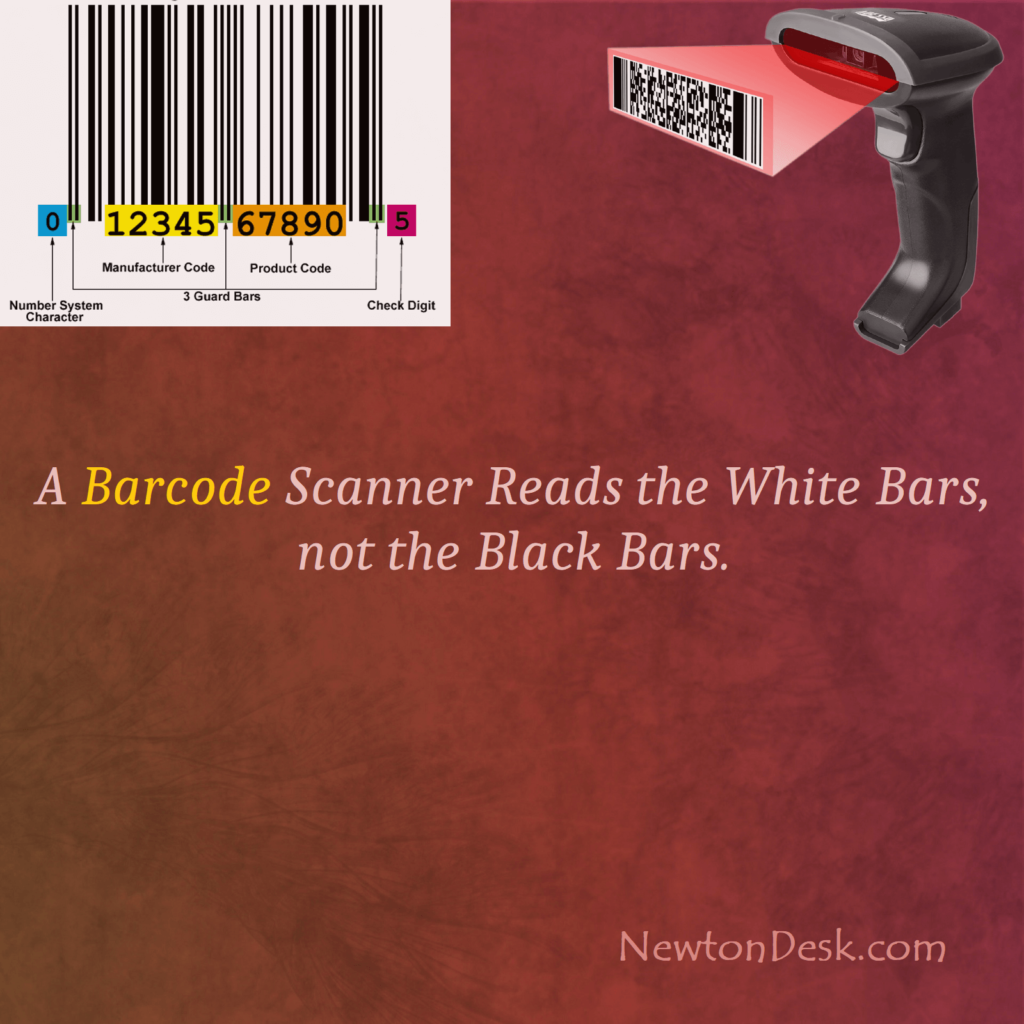Actinides On The Periodic Table of Elements
About Actinides
Actinides are elements 89 to 103 and fill their 5f sublevel progressively. So, 15 elements are found in nature. They are the elements of f-block. They are start from actinium that’s why these elements are called as actinides. These elements are radioactive, and they have no stable isotopes.
Abundance: Only two actinides found in large quantities in the earth’s crust are Thorium and Uranium. Small amounts of plutonium and neptunium are found in the uranium arrangement. Actinium and protactinium are the decay products of some thorium and uranium isotopes. Other actinides are considered synthetic elements. When they occur naturally, they are part of a decay scheme for a heavier element.
Elements of the Actinide Series: 15 elements are found in actinide series which are Actinium (Ac), Thorium (Th), Protactinium (Pa), Uranium (U), Neptunium (Np), Plutonium (Pu), Americium (Am), Curium (Cm), Berkelium (Bk), Californium (Cf), Einsteinium (Es), Fermium (Fm), Mendelevium (Md), Nobelium (No), Lawrencium (Lr). The series start from actinium, thorium to lawrencium.
General Properties of Actinides:
- Electron configuration: The electron configuration of two outermost shells of these elements remains the same and the differentiating electrons enter in the 5f Sub energy level. The electronic configuration of actinides is also uncertain this is because the energy of 5f and 6d subshells are almost equal and the sometimes it is difficult to ascertain whether the differentiating electron enter into 5f or 6d subshell levels. So, the electronic configuration of actinides is [Rn] 5f1-14 6d0-1 7s2.
- Oxidation state: They show variable oxidation states. This is because, the energy level of 5f, 6d and 7s orbitals are almost similar and electron from all energy levels may be used for bond formation. In first half of the actinide series the energy required for the conversion 5f→6d is less than that required for the conversion 4f→5d. These actinides therefor, show more higher oxidation states such as +4, +5, +6, and +7 as compared to lanthanides in last half of the actinide series, the energy required for the conversion 5f→6d is more than that required for conversion 4f→5d.
- Atomic radii and ionic radii: The atomic and ionic radii of these elements decrease with increase in the atomic number. It has been observed that ongoing from Ac3+ to Cm3+ the ionic radii decrease from 1.11A° to 0.98A° and ongoing from Ac4+ to Cm4+, the ionic radii decrease from 0.99A° to 0.88A°. This regular decrease of atomic and ionic radii is known as actinide contraction.
- Formation of colored Salts: They form colored salts. The color appears to depend upon the number of 5f electrons. When their salts in the solid state are exposed to light the f-electrons of these elements absorb light from the visible region are excited from f-orbital of lower energy state to high f-orbital to higher energy state.
- Magnetic properties: Most of the ions of actinide series are paramagnetic, this due to the presence of unpaired f-electrons in these ions Ac3+, Th4+, Lw3+ are diamagnetic and are replaced by the magnetic field.
- Formation of complex salts: They form complex compound and their tendency to form complex compounds is greater than lanthanides. This is because of higher nuclear charge and small size of their atoms.
- Physical Properties: They are silvery white highly electropositive metals like lanthanides. Except thorium and americium, they have high density.
- Ionization energy: They have low ionization energy.
- 5f electrons exert poor shielding effect.
- These metals are malleable and ductile.
Uses of Actinides:
Thorium
- It is used in atomic reactors to generate power.
- It is used in treatment of cancer.
- Its salt is used in making incandescent gas mantles.
Uranium
- It is used as nuclear fuel.
- Its salts are used in glass industry.
- Ceramic and medicines industry.
Plutonium
- It is used as fuel for atomic reactors as well as for making atomic bombs.
- All isotopes of plutonium are important as nuclear fuels.
Americium
- Am is valuable laboratory source of alpha particles.
Actinides Interesting Facts:
- Metals tarnish easily in air.
- These elements are flammable (spontaneously ignite in the air), especially in the form of finely divided powders.
- Actinides are very dense minerals with different structures.
- Many allotropes can form – plutonium contains at least six allotropes.
- The exception is actinium, which has less crystalline phases.
- They React with boiling water or dilute the acid to release hydrogen gas.




